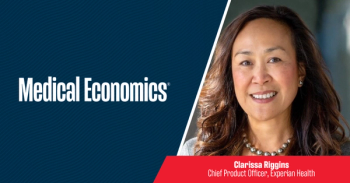
Value-based care could mean better access for Traditional Medicare patients, study finds
Key Takeaways
- VBC models with strong practice support can increase access to primary care for Traditional Medicare patients, even as overall availability declines.
- Physicians in a full-risk VBC model saw an average of 8.3 more new Traditional Medicare patients annually compared to fee-for-service peers.
Physicians in supported, full-risk VBC models saw more new Traditional Medicare patients and kept panels open longer.
A new study in
Analyzing Medicare claims from 2019 to 2023, researchers found that primary care physicians (PCPs) who adopted a full-risk, multipayer VBC model in 2022 — with operational support from
Led by Benjamin Kornitzer, M.D.; Aaron Yao, Ph.D.; Deborah N. Peikes, Ph.D., M.P.A.; and Karthik Rao, M.D., the study compared two groups of PCPs: 208 physicians who joined the full-risk VBC model supported by agilon health, and 3,657 who did not.
By 2023, the difference in new patient access was clear. According to the study, physicians in the VBC group averaged 8.3 more new Traditional Medicare patients annually and accepted new patients for 0.71 more months of the year than their fee-for-service counterparts. The difference-in-differences analysis controlled for other time-based changes and patient demographics.
“These findings suggest that a VBC model with support may help sustain access to primary care for Traditional Medicare beneficiaries, even as overall availability declines,” the study authors wrote.
More than just a new payment structure
The model studied wasn’t just about shifting how doctors get paid. Participating practices received infrastructure support, analytics tools, clinical workflow guidance and performance coaching from agilon health, which partners with more than 2,200 PCPs nationwide.
“Primary care is foundational for Medicare beneficiaries, especially those with chronic conditions. Despite its importance, many senior patients, particularly ones with Traditional Medicare, have difficulties finding a PCP and establishing this enormously critical longitudinal relationship,” said Rao, chief medical officer of
Researchers suggest that the full-risk incentives — combined with hands-on support — enabled practices to better manage care delivery, improve efficiency and accept more new patients without compromising quality.
Policy implications
The findings arrive as the U.S. confronts a looming shortage of PCPs. By 2040, the country could be short more than 57,000 PCPs. Meanwhile, Medicare reimbursement has dropped 29% since 2001 when adjusted for practice costs, putting financial strain on practices that still operate under fee-for-service.
The Centers for Medicare & Medicaid Services (CMS) aims to shift all Medicare beneficiaries into some form of accountable care by 2030. While most research has focused on VBC’s effect on cost and care quality for existing patients, this new study highlights a potential benefit often overlooked: access for new patients.
CMS could consider adding access-related metrics — months accepting new patients or claims-based measures of panel openness — to its existing quality programs. According to the study, these metrics could reward practices that continue accepting new Traditional Medicare patients at a time when many clinics are limiting intake.
It should be noted that the study is not a randomized trial, and physicians who chose to adopt the model may differ from those who did not in ways the analysis couldn’t fully adjust for. The study also didn’t track how specific practice-level changes — like staffing or workflows — contributed to the improved access.
Still, as Medicare enrollment approaches 68 million and many seniors struggle to find a doctor, the results suggest that with the right mix of payment structure and practice support, VBC could help reverse some of the troubling access trends.
What is value-based care?
At its core, VBC aims to shift health care away from volume-based incentives. In traditional fee-for-service models, physicians are paid per visit or procedure. In contrast, full-risk VBC models provide fixed payments that are adjusted for patient complexity, holding physicians accountable for total cost and quality of care.
These arrangements enable practices to invest in team-based care — nurses, care managers and coordinators — while focusing on prevention, chronic disease management and transitions of care. If done well, VBC can reduce avoidable hospitalizations and lower costs, while improving outcomes and patient satisfaction.
But not all VBC is created equal. The model studied here included operational support, data infrastructure and quality coaching from an enablement organization — an increasingly common setup for independent practices making the shift.
As the health care system continues to grapple with workforce shortages, cost pressures and rising demand from an aging population, value-based care is no longer just a payment alternative — it’s increasingly seen as a strategic tool to help primary care survive and adapt.
And, as the study suggests, it might also help keep the door open for Medicare patients looking for a new PCP.
Newsletter
Stay informed and empowered with Medical Economics enewsletter, delivering expert insights, financial strategies, practice management tips and technology trends — tailored for today’s physicians.



















